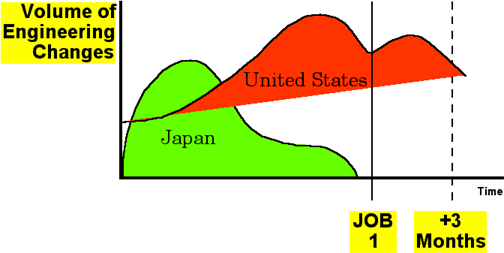Design Review Motivation Guide
Learning Cycles
Cultural values and work practices affect design review priorities!
When Frederick Winslow Taylor created the assembly line methodology in the 1920s, its purpose was to break work into small tasks that could be performed rapidly in a sequential manner. It placed emphasis on strong individual performance on specified tasks. The method was consistent with the emphasis of the individual in western cultures. Eastern cultures, on the other hand, place more emphasis on group or collective success. As a result of the assembly line, western organization structures evolved to reinforce the assembly line principles all the way to the top of the organization. Today, marketing starts the process. Marketing is followed by engineering, which is followed by test, which is followed by manufacturing, and so on. In western culture, "downstream" functions get involved when their turn in the design-assembly sequence arises.
The time pressures on development that began to surface in the 1980s have caused a continual rethinking of the assembly line as the optimal design-production method. For another day, this is why the "team" concept evolved in western culture in the last decade. Western companies simply cannot do things completely sequentially and be successful. There is no longer enough time to fix errors that get caught further "down the pike" when the downstream professionals first become critically involved. While 70+ years of success using assembly line methods won't get thrown out on its ear overnight, there is clearly a recognition that any one person cannot possibly know everything that is necessary to successfully design, test, produce, and launch a product. Teams with early cross-functional involvement arose based on a real business need. An individual cannot do it all alone. Errors that are not caught early get more expensive with every passing day.
A well regarded example from the automotive industry (Toyota vs. Ford) makes the point about Western vs. Eastern values and implies that the "late" western values often result in more stress and more visibility of issues to the customer and marketplace in general.
[Source: "Study of Japanese Automotive Manufacturers vs Ford Motor Company", Donald Clausing, Massachusetts Institute of Technology, 1991.]

Return to the Design Review Information Center









